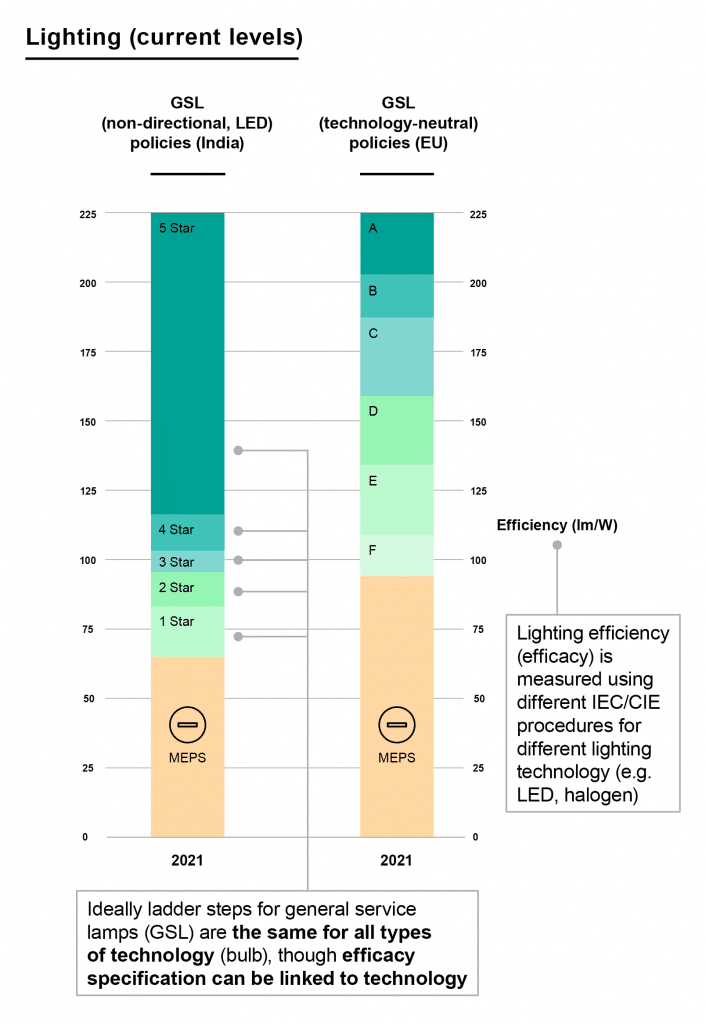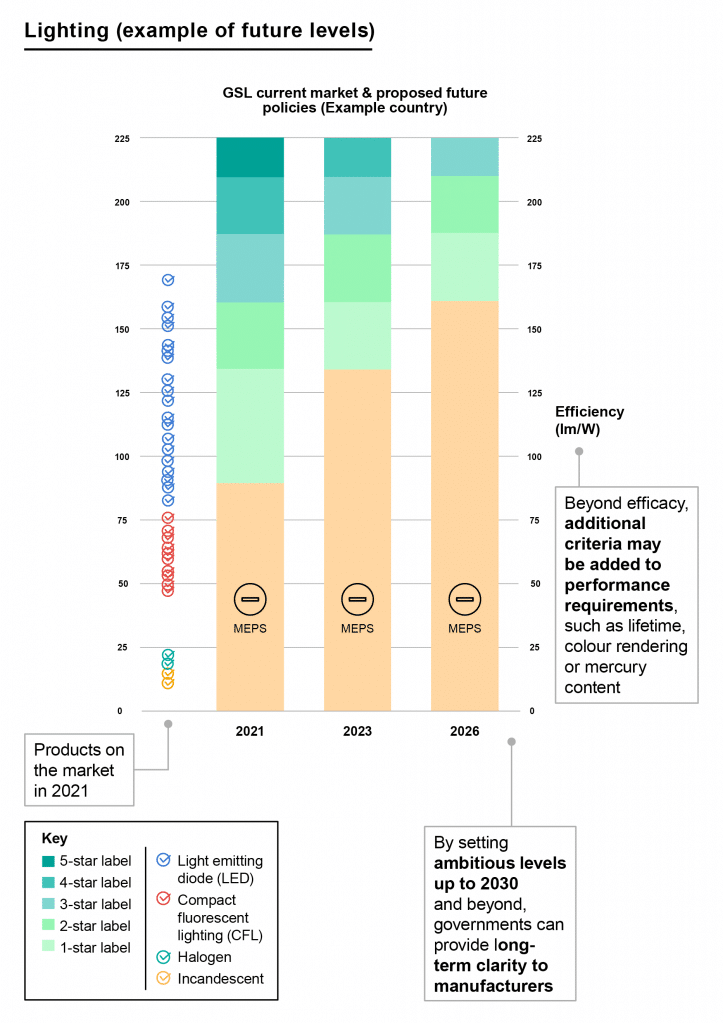Indoor Lighting
Indoor lighting in residential and commercial buildings significantly contributes to global energy as well as peak demand. Efficiency gains in lighting can deliver substantial energy savings, while allowing access to and improved quality of energy services in developing countries. Lighting is, therefore, an essential target for demand-side energy efficiency initiatives due to its relevance and cost-effectiveness. The light-emitting diode (LED) is today’s most energy-efficient and rapidly-developing lighting technology. In 2019, LED sales reached a critical milestone, achieving a record number of sales of more than 10 billion units, encompassing the whole luminaire (i.e. bulbs, tubes and modules). Both residential and commercial LED deployment is advancing, and LED sales now exceed fluorescent lamps.
In a hypothetical situation in which the efficiency of all new indoor lighting sold globally doubled from 2022 onwards, the potential global annual electricity reduction by 2030 could be 1200 TWh, resulting in approximately 550 MtCO2 emissions reductions. Under the same hypothesis, SEAD member countries alone could save over 800 TWh, resulting in almost 400 MtCO2 energy-related emissions avoided in 2030.
Current policy coverage in standards and labels
There is an opportunity to limit the energy demand growth of indoor lighting through efficiency policies such as more stringent minimum energy performance standards (MEPS) and labelling. To date, 89 countries worldwide have minimum efficacy requirements for lighting products and 61 countries use comparative labels. MEPS now cover up just over 75% of global energy use for lamps, an improvement of more than 30 percentage points since 2010. Additional mandatory lighting policies are currently under development in several countries in Asia, East Africa, Latin America and the Carribaean.
MEPS and label levels have recently been updated, in the EU, where new minimum thresholds come into force in September 2021. Further scheduled updates in 2023 will phase out most halogen lamps and the traditional fluorescent tube lights, which are common in offices. Labels will also be rescaled from A (most efficient) to G (least efficient) and include a QR-code that links to more information in an online database. South Africa is planning to raise MEPS for general service lamps to 90 lm/W in 2022.
The Energy Performance Ladder
To support the growth of markets for efficient appliances, the SEAD Initiative has developed the Energy Performance Ladder framework, which brings together multiple policies under a single consistent set of performance thresholds. These Ladder ‘steps’ are defined as energy performance levels using a standard test procedure. Governments can then set policy thresholds (such as MEPS, labels and high energy performance standards or HEPS) at different steps, as well as years in which the thresholds will move up the ladder.
The Ladder then provides a framework that can:
- Show a clear trajectory for improving appliance energy performance over time, by defining how policy will move up the ladder in future
- Benchmark energy performance across markets, while allowing policy to be set that is suitable for local market condition
- Aggregate markets to reduce costs and make highly efficient products more widely available.
Illustrations of Energy Performance Ladders with current and planned MEPS levels for industrial electric motors are depicted below.

An illustration of the Energy Performance Ladder for indoor lighting is depicted below. General Service Lamps (GSLs) current market and proposed future polices are represented for 2021, 2023 and 2016. For each Ladder step the MEPS, standards and HEPs are defined based on the efficacy of the bulb (lm/W).
